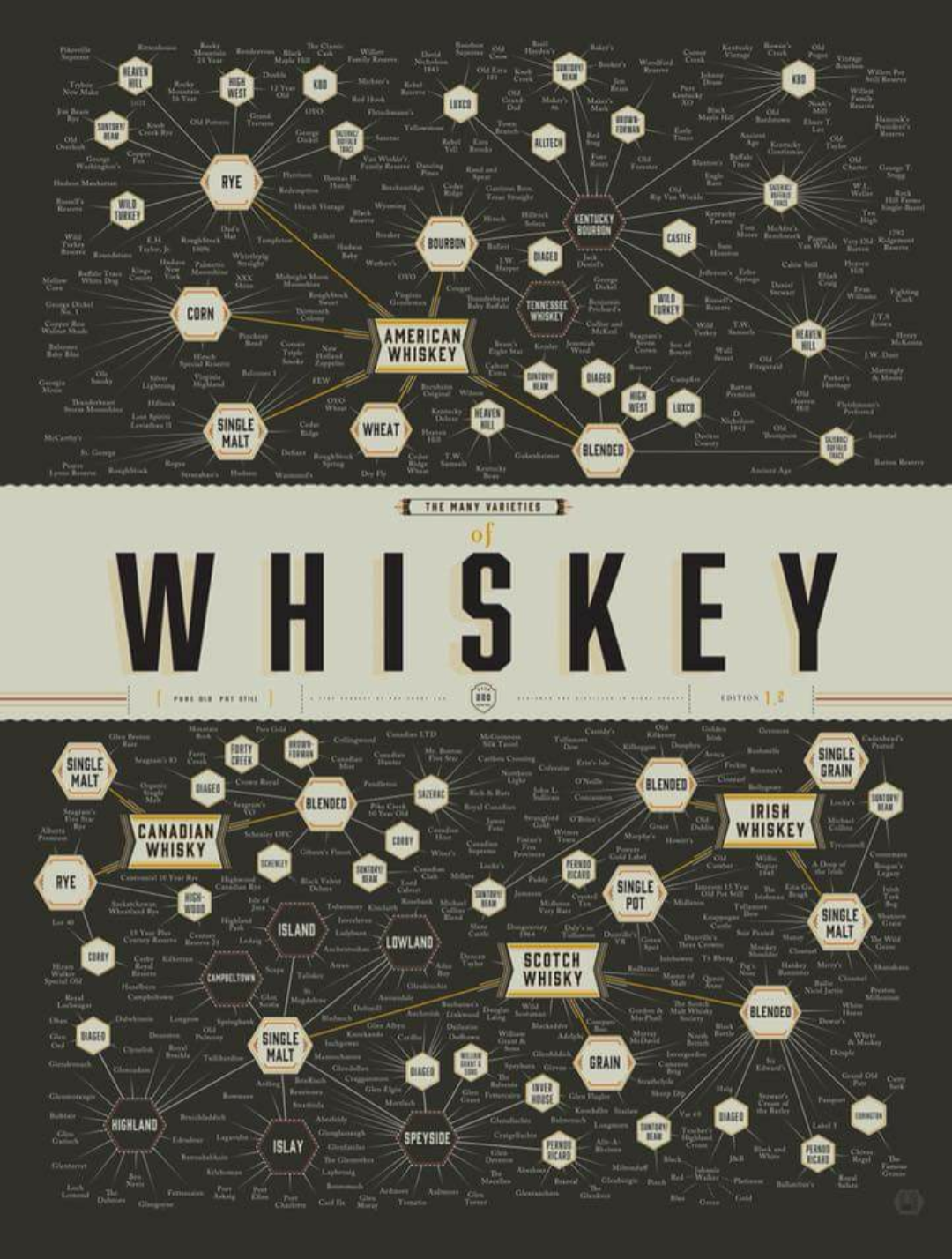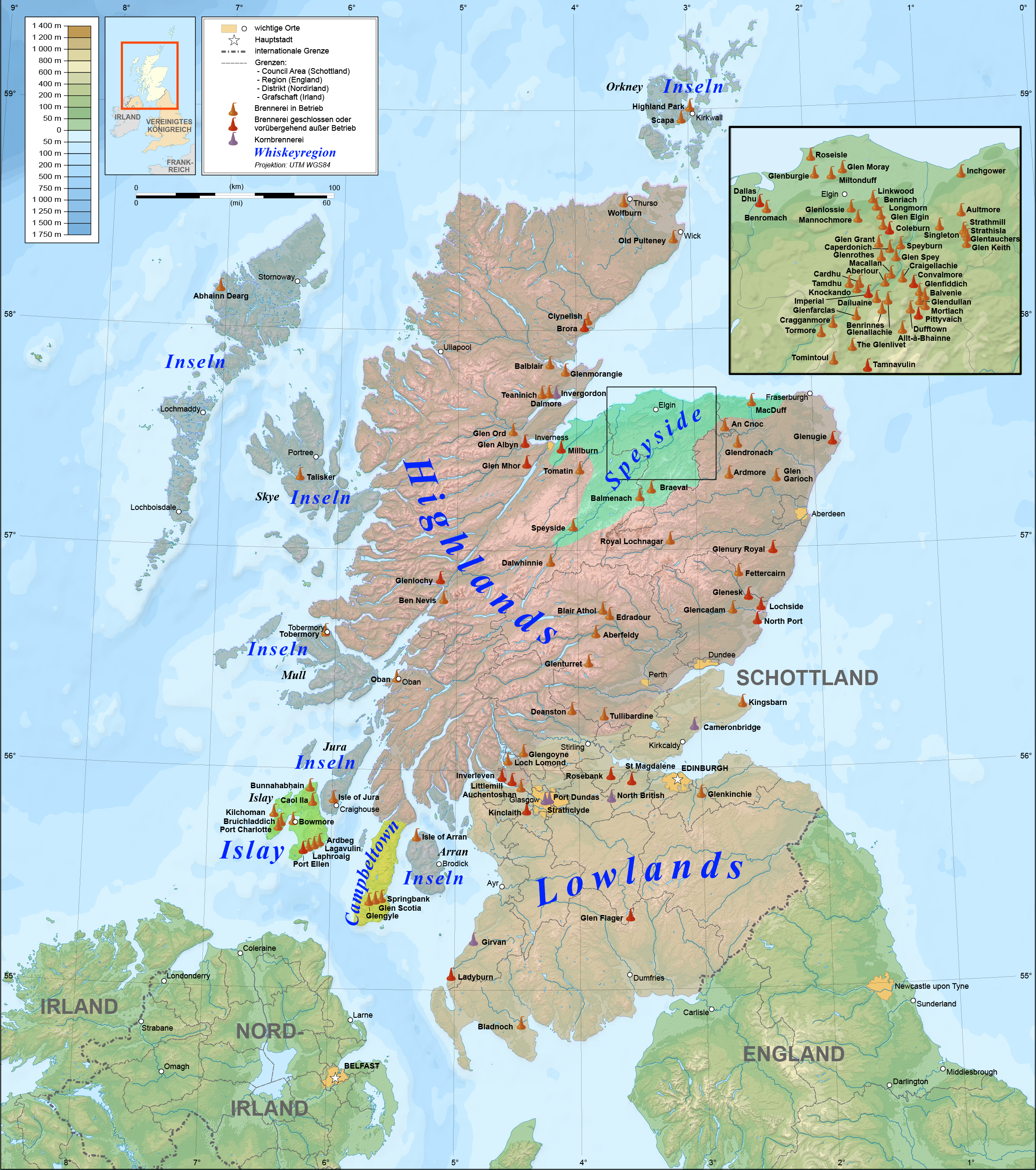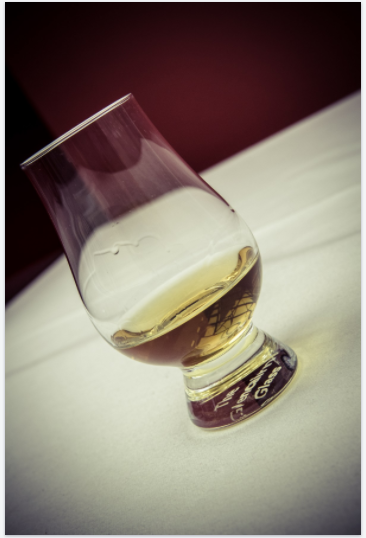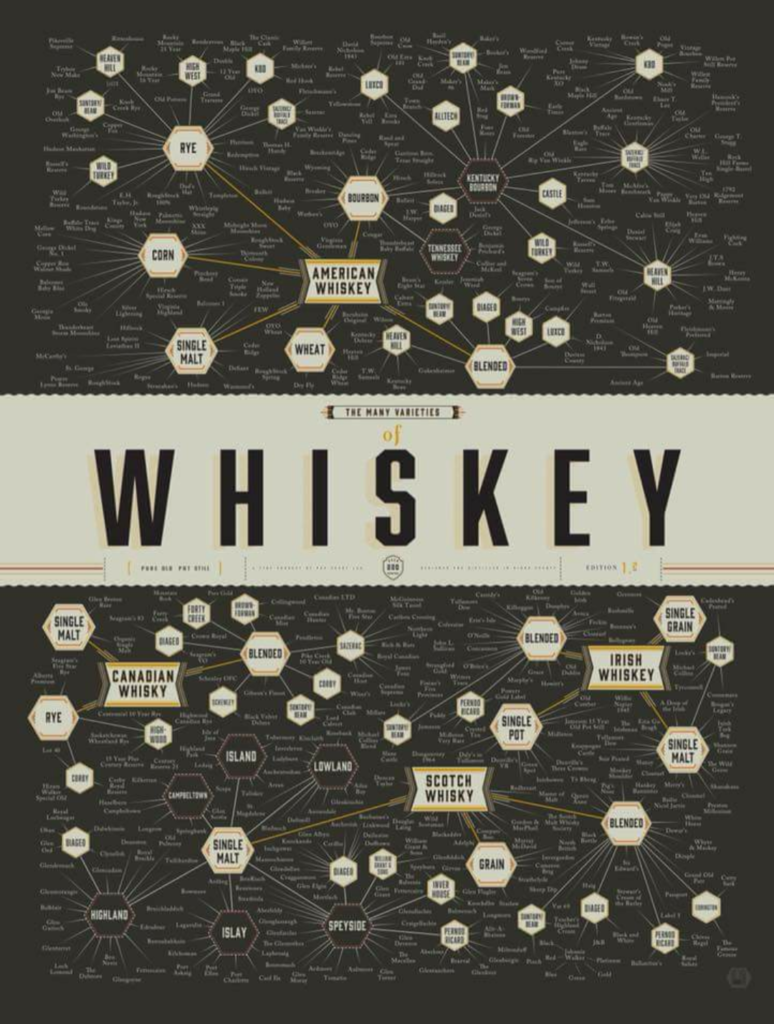So...What exactly IS whiskey???
Maaaaaybe something that I should have tried to explain first when I began this journey, but it’s something people are still asking me, which I totally understand. This shit can get a little confusing…So I’m going to try to explain it to the best of my knowledge in a way that everyone, including myself, can understand…I’m still learning as I go as well and a complete noob to this whole world so bear with me and if I do get anything wrong, please let me know by subscribing to my email list and sending me a message, I respond to everyone so you’ll definitely hear back from me…ok…here we go!
Whiskey
Whiskey is an umbrella and encompasses everything under the drink menu…whiskey is any spirit (hard liquor) distilled from fermented grain mash. All whiskey has to be distilled at a minimum of 40% and a maximum of 94.8% alcohol by volume (ABV).
Scotch
Scotch is whiskey made in Scotland, some people also call it a Scotch Whiskey. It is made from a malted barley and it must be aged in oak casks (barrels) for at least 3 years and distilled twice. Different regions of Scotland produce very different tasting types of Scotch, but that might be a little more detailed than needed right now…shall we carry on?
Bourbon
Bourbon is “American Whiskey” because it is whiskey made in America, BUT it has to be made with at least 51% corn and has to be aged in a NEW charred oak barrel. There is no minimum aging requirements/laws for a bourbon; however, if the spirit wants to label itself as “straight” bourbon it has to be aged at least 2 years. Often, once the whiskey is removed from the barrel, distilleries in Scotland reuse the used bourbon barrels to continue to age their Scotch.
Tennessee Whiskey
For example, Jack Daniels Tennessee Whiskey is basically straight bourbon made in America and following its laws of being made by at least 51% corn, but they claim that they are the only type of whiskey that put their liquid through a charcoal filtering process; therefore, they didn’t want to be called a “bourbon” and instead are called a “Tennessee Whiskey”.
Irish and Japanese Whisk(e)ys
Kinda self explanatory…Irish whiskey is whiskey aged in the Republic of Ireland or in Northern Ireland. Their laws are not as strict so a lot of the whiskeys from Ireland can vary significantly in taste. Japanese whisky, while obviously from Japan, tend to follow Scotland’s processes in terms of making whisky, but many of the more popular Japanese whiskies are “blended” whiskies meaning that they are a mixture of at different whiskies from different distilleries blended together to make a single whisky.

So...What exactly IS whiskey???
Maaaaaybe something that I should have tried to explain first when I began this journey, but it’s something people are still asking me, which I totally understand. This shit can get a little confusing…So I’m going to try to explain it to the best of my knowledge in a way that everyone, including myself, can understand…I’m still learning as I go as well and a complete noob to this whole world so bear with me and if I do get anything wrong, please let me know by subscribing to my email list and sending me a message, I respond to everyone so you’ll definitely hear back from me…ok…here we go!
Whiskey
Whiskey is an umbrella and encompasses everything under the drink menu…whiskey is any spirit (hard liquor) distilled from fermented grain mash. All whiskey has to be distilled at a minimum of 40% and a maximum of 94.8% alcohol by volume (ABV).
Scotch
Scotch is whiskey made in Scotland, some people also call it a Scotch Whisky. It is made from a malted barley and it must be aged in oak casks (barrels) for at least 3 years and distilled twice. Different regios of Scotland produce very different tasting types of Scotch, but that might be a little more detailed than needed right now…shall we carry on?
Bourbon
Bourbon is “American Whiskey” because it is whiskey made in America, BUT it has to be made with at least 51% corn and has to be aged in a NEW charred oak barrel. There is no minimum aging requirements/laws for a bourbon; however, if the spirit wants to label itself as “straight” bourbon it has to be aged at least 2 years. Often, once the whiskey is removed from the barrel, distilleries in Scotland reuse the used bourbon barrels to continue to age their Scotch.
Tennessee Whiskey
For example, Jack Daniels Tennessee Whiskey is basically straight bourbon made in America and following its laws of being made by at least 51% corn, but they claim that they are the only type of whiskey that put their liquid through a charcoal filtering process; therefore, they didn’t want to be called a “bourbon” and instead are called a “Tennessee Whiskey”.
Irish and Japanese Whisk(e)ys
Kinda self explanatory…Irish whiskey is whiskey aged in the Republic of Ireland or in Northern Ireland. Their laws are not as strict so a lot of the whiskeys from Ireland can vary significantly in taste. Japanese whisky, while obviously from Japan, tend to follow Scotland’s processes in terms of making whisky, but many of the more popular Japanese whiskies are “blended” whiskies meaning that they are a mixture of at different whiskies from different distilleries blended together to make a single whisky.
Click the button below to see which whiskey you wanna try first!
6 Scotland Regions and Different Scotch Flavors
I’ve already touched on the fact that all whisky made in Scotland is called scotch, but to go a little deeper (that’s what she said, ha!) and I’m going to go over a few more facts about Scotch and talk about the 5 main regions of Scotland to describe some distinct and common flavor notes you’d get from the distilleries that make their scotch in these specific regions. First of all, by law, each Scotch has to be matured in used oak casks and matured for at least 3 years, it can’t have any other EXTRA ingredients (like stupid ass fruit flavors and shit) other than water and coloring and have a minimum alcohol strength (ABV: alcohol by volume) of 40% or 80 proof.
Highlands
This is the largest producing region on Scotland and because of this the flavors can vary significantly from each distillery. Usually there are hints of peat (smoke), fruity notes like berries and some citrus zest, honey and more full bodied flavors.
Well-known distilleries: Glenmorangie, Dalmore, Glendronach, Oban
Lowlands
Speyside
Campbeltown
Islay
*The Islands (6th region)

Click the button below to get to the full Scotch list with full reviews, ratings and flavor profiles.

6 Scotland Regions and Different Scotch Flavors
I’ve already touched on the fact that all whisky made in Scotland is called scotch, but to go a little deeper (that’s what she said, ha!) and I’m going to go over a few more facts about Scotch and talk about the 5 main regions of Scotland to describe some distinct and common flavor notes you’d get from the distilleries that make their scotch in these specific regions. First of all, by law, each Scotch has to be matured in used oak casks and matured for at least 3 years, it can’t have any other EXTRA ingredients (like stupid ass fruit flavors and shit) other than water and coloring and have a minimum alcohol strength (ABV: alcohol by volume) of 40% or 80 proof.
Highlands
This is the largest producing region on Scotland and because of this the flavors can vary significantly from each distillery. Usually there are hints of peat (smoke), fruity notes like berries and some citrus zest, honey and more full bodied flavors.
Well-known distilleries: Glenmorangie, Dalmore, Glendronach, Oban
Lowlands
Speyside
Campbeltown
Islay
*The Islands (6th region)
Click the button below to get to the full Scotch list with full reviews, ratings and flavor profiles.
5 Popular Bourbons to use for an Old Fashioned
-Bulleit
-Four Roses
-Buffalo Trace
-Maker’s Mark
-Knob Creek
Let it Breathe!!!
Make sure that once you open up your bottle or pour some whiskey into your glass you let the liquid breathe a little. To do this in the glass, just swirl it around and around like wine. The more you do this, and the more vigorously you do this, the more it opens up allowing you to experience all the flavor notes possible, plus it decreases the alcohol burn when smelling and tasting the whiskey. Also, allow the liquid to slowly roll and touch each part of the glass and watch how long the the liquid takes to bead and drip back down to the bottom because this gives you an idea of the finish. The slow drip the whiskey makes are called the “legs”. If it takes a long time to drip down that means the liquid is more oily and has a longer finish lingering in your palate and throat. If it beads down quickly, it’s more watery and has a shorter finish, which is good just in case the whiskey tastes like shit…so remember, just let it breathe!!!!!


Let it Breathe!!!
Make sure that once you open up your bottle or pour some whiskey into your glass you let the liquid breathe a little. To do this in the glass, just swirl it around and around like wine. The more you do this, and the more vigorously you do this, the more it opens up allowing you to experience all the flavor notes possible, plus it decreases the alcohol burn when smelling and tasting the whiskey. Also, allow the liquid to slowly roll and touch each part of the glass and watch how long the the liquid takes to bead and drip back down to the bottom because this gives you an idea of the finish. The slow drip the whiskey makes are called the “legs”. If it takes a long time to drip down that means the liquid is more oily and has a longer finish lingering in your palate and throat. If it beads down quickly, it’s more watery and has a shorter finish, which is good just in case the whiskey tastes like shit…so remember, just let it breathe!!!!!
Nose, Palate, Finish???
Nose, Palate, Finish???
Water vs Ice vs Neat
Water vs Ice vs Neat

Best Glassware to Drink Whiskey in...
The most common glassware people tend to enjoy their whiskey in is a Glencairn style of glass or any snifter. Its best to have a glass that is narrow at the top, that way the vapors from the whiskey doesn’t escape and you can smell all the different scents that get trapped within the glass versus a wide open top which allows the vapors to escape. Also, if, with the initial inhalation of the whiskey all you get is that alcohol burn, exhale that right away and go back in and repeat. Sometimes it’ll take a few initial whiffs to get rid of that ethanol smell out of the glass and then all you’re left with is the aromas of the whiskey itself and that way you can actually enjoy all the scents which will give you an idea of what the whiskey will taste like.



